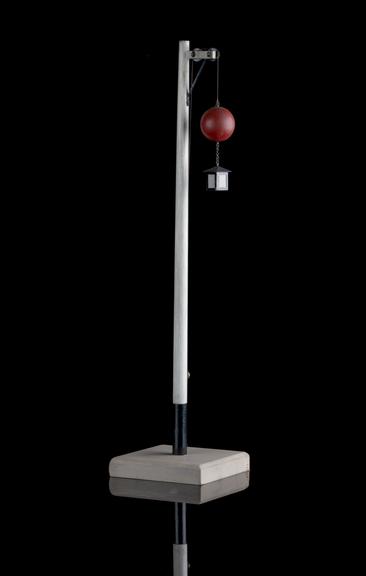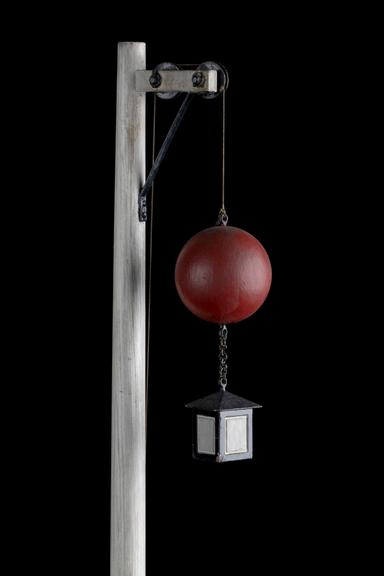

Model of a Great Western Railway ball signal
- Made:
- c.1912




Model signal, scale 1:16, Great Western Railway ball signal, c.1840.
The Great Western Railway (GWR) commenced railway operations between London and Maidenhead in 1838, with the line being extended to Reading in 1840. The company initially used railway policemen to regulate the passage of trains on the time-interval system.
In 1840, regulations for locomotive crews published by the GWR’s Locomotive Superintendent, Daniel Gooch, indicate that a ball signal was installed to control the approaches to Reading station. The presence of the ball at the top of the post gave a positive indication that the line ahead was clear.
This type of signal gained popularity among the railroads of the United States of America, although it is unclear how extensively it was used by the GWR. It was nevertheless short-lived, being replaced by Isambard Brunel’s ‘disc and crossbar’ signal design from 1841.
Details
- Category:
- Railway Models
- Object Number:
- 1912-42
- Measurements:
-
overall: 422 mm x 100 mm x 100 mm,
- type:
- model
- credit:
- Cussons, G. Ltd.




